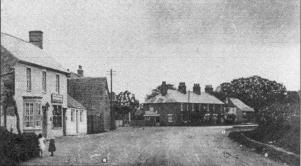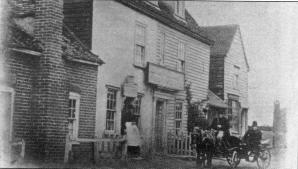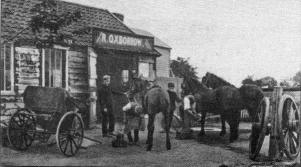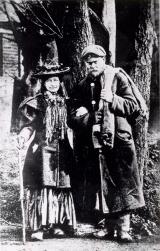Kirby Remembered
by Madge Pucill

Kirby Remembered |
 |
Imagine a peaceful village with no street lamps, scarcely any traffic and with pleasant greens planted with slender poplar trees protected by white-painted iron palisading; that was Kirby Village before World War I. There was also a triangular green at the entrance to what is now called Halstead Road - then it was just a lane with only two buildings in it, a corrugated iron chapel and a slaughterhouse. In the winter this lane was very muddy and we children going to and fro from Kirby Council School (as it was called then), played marbles in the cart tracks.
There were quaint cottages painted white opposite "Yew Trees" and others black-tarred near the Ship Inn, one where the entrance to Horsey Road is now on the Walton Road and others near the Red Lion Inn, also demolished.

It was a very friendly village and all the inhabitants were known to each other, the population being much less than it is today. Most of the men-folk worked on the land and horses were used to draw the ploughs and other farm implements. It was amusing to listen to the language used by the men to their horses, such as "Wurry deppa cubby wee" which I heard but never found out the meaning. The men were greatly attached to their horses and always cared for them well.
When harvest time came and the Binders were in use cutting the corn, all the young lads gathered, sticks in hand, to catch the rabbits as the middles of the fields were reached. After the Binders and the Rakes had done their work we children were allowed to go gleaning, and it was surprising what large bunches of corn we collected which we hung in the chicken run and had the fun of watching them peck. Next day a nice egg for breakfast!
Not only were horses used on the land, there were several carriages drawn by those splendid creatures. The owners of Hill House, Kirby Hall, Sneating Hall, Yew Trees and The Forge all had carriages of various types - the trades-people also, for goods were delivered by horse and cart. There was a landau for hiring to take people to church or for country drives - those were the days! A milk float with gleaming brass decoration on the churns and on the float itself was a welcome sight in the early morning. Our jugs were filled from pint and half pint measures carried inside a can, and cream came in small brown stones jars with little handles.
Very few houses had a piped water supply, so many people were thankful for the spring water taps erected at intervals through the village. Every morning they could be seen going backwards and forwards with buckets filling the large stone crocks in their kitchens.
During the winter months hurricane lamps were brought into use for going to the Post Office (where Low Barn is now), shopping, or visiting after dark. On our bicycles we had oil lamps, which used special oil in a container with a wick - only a dim light, but we knew the roads. Carbide-gas lamps came later and were a great thrill as they threw a glowing beam along the road.

I must mention the Blacksmith's shop which was a meeting place for young and old who used to like to hear the ringing of hammer on anvil and see the sparks flying, to say nothing of the special smell when hot shoe was placed on the horse's hoof. It was a common sight to see several horses tethered to very strong posts outside waiting to be shod - horseshoeing was very hard work.

From time-to-time Grimes and Emma, notorious tramps, called and were always allowed to spend the night in the warmth of the blacksmiths shop. I was fascinated by Emma's hair, which she wore in shiny black plaits showing below her old felt hat; Grimes had a beard and wore a cloth cap. Other occasional visitors were hawkers of cheap but pretty jewellery, cream cheeses on straw mats and the popular onion man on his bicycle.

On Saturdays a carrier van from Thorpe-le-Soken collected village people for shopping in Colchester and also brought back parcels from various shops to homes in the village. The charge was sixpence.
Next door to the Red Lion stood a large barn, which housed a steam engine and threshing tackle etc. which was hired by various farmers and worked by its owner and a man called Joe. As it started on its journey it was filled with water from the roadside tap almost opposite. The gurgling sound always attracted the village children who often followed the engine to its place of work, there to watch the elevator, and the straw stack being erected sheaf by sheaf. At the end of September the farmers gave a Harvest Supper for their men and their families - very much enjoyed, and then the cycle of farming started all over again.
Kirby Remembered was written by Madge Pucill (nee Oxborrow) and was published in the KVPS Newsletter No. 10 in July 1979.